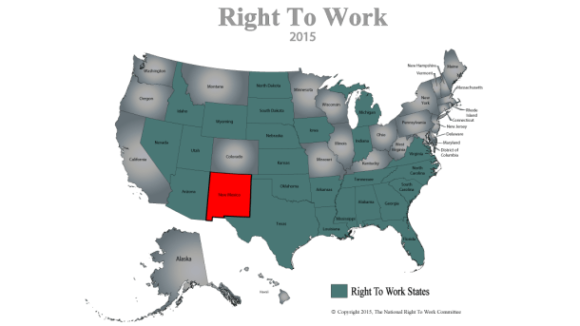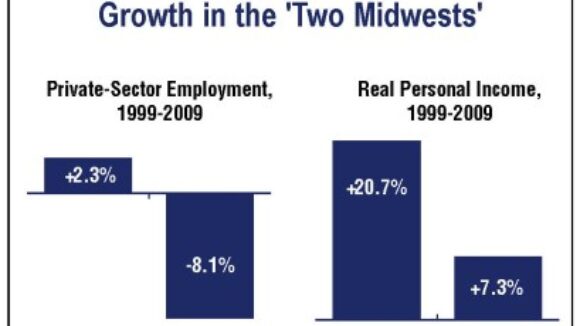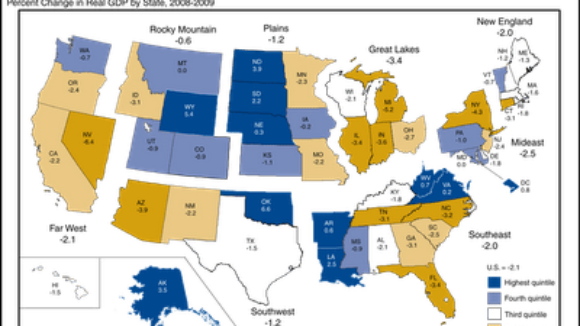Right to Work: Rx For Job-Losing States
(Source: December 2010 NRTWC Newsletter)
In every region of the country where both Right to Work states and forced-unionism states are located, the Right to Work states' long-term economic growth is superior. The Midwestern contrast is especially strong.
Legislators Look at 'Oklahoma Model' For Stronger Economic Growth
It's been more than seven decades since The Grapes of Wrath, both the John Steinbeck novel and the Hollywood movie it inspired, established the desperate migration of "Okies" from the Dust Bowl to the orchards of California as an icon of the Great Depression.
Times have certainly changed.
As an October 12 USA Today feature story noted, since 1999, "the number of Californians departing the Golden State for Oklahoma has outnumbered those going the opposite direction by more than 21,000 . . . ."
The net influx of people into the Sooner State from California and many other states with sub-par or abysmal job and income growth records is, as USA Today put it, "a sign of Oklahoma's growing economic prowess."
To explain the state's recent record of economic success, the USA Today feature specifically mentioned Oklahoma's low and relatively stable housing costs, its concentration of aerospace and defense technology expertise, and its oil and natural gas reserves.
But as important as these assets are, Oklahoma had them all in the early 1990's, when its long-term job and income growth still trailed the national average.
The real turning point for Oklahoma's transition from an economic laggard to an economic leader was in 1992 -- when the National Right to Work Committee teamed up with local grass-roots activists to map out a multi-year campaign to pass a Sooner Right to Work law.
Benefits of Right to Work Campaign Were Evident Long Before State Law Was Passed
"In the early 1990's, the 'Dust Bowl' was already a distant memory, but Oklahoma's job climate still seemed pretty dry," commented Matthew Leen, vice president of the National Right to Work Committee.
Domestic population migration data reflect Oklahoma's "growing economic prowess." The 1994-2001 Sooner State campaign to pass a Right to Work law, as well as the law itself, helped build that prowess.
"From 1984 through 1994, the decade before the Committee program to pass a Right to Work law in Oklahoma was initiated, private-sector employment in Oklahoma increased by less than a third as much as the national average, according to the U.S. Labor Department.
"Over that same decade, inflation-adjusted U.S. Commerce Department data show Oklahoma's real personal income grew by just 2.3%, less than a tenth of the nationwide percentage gain.
"But in 1994, the seeds of change were





